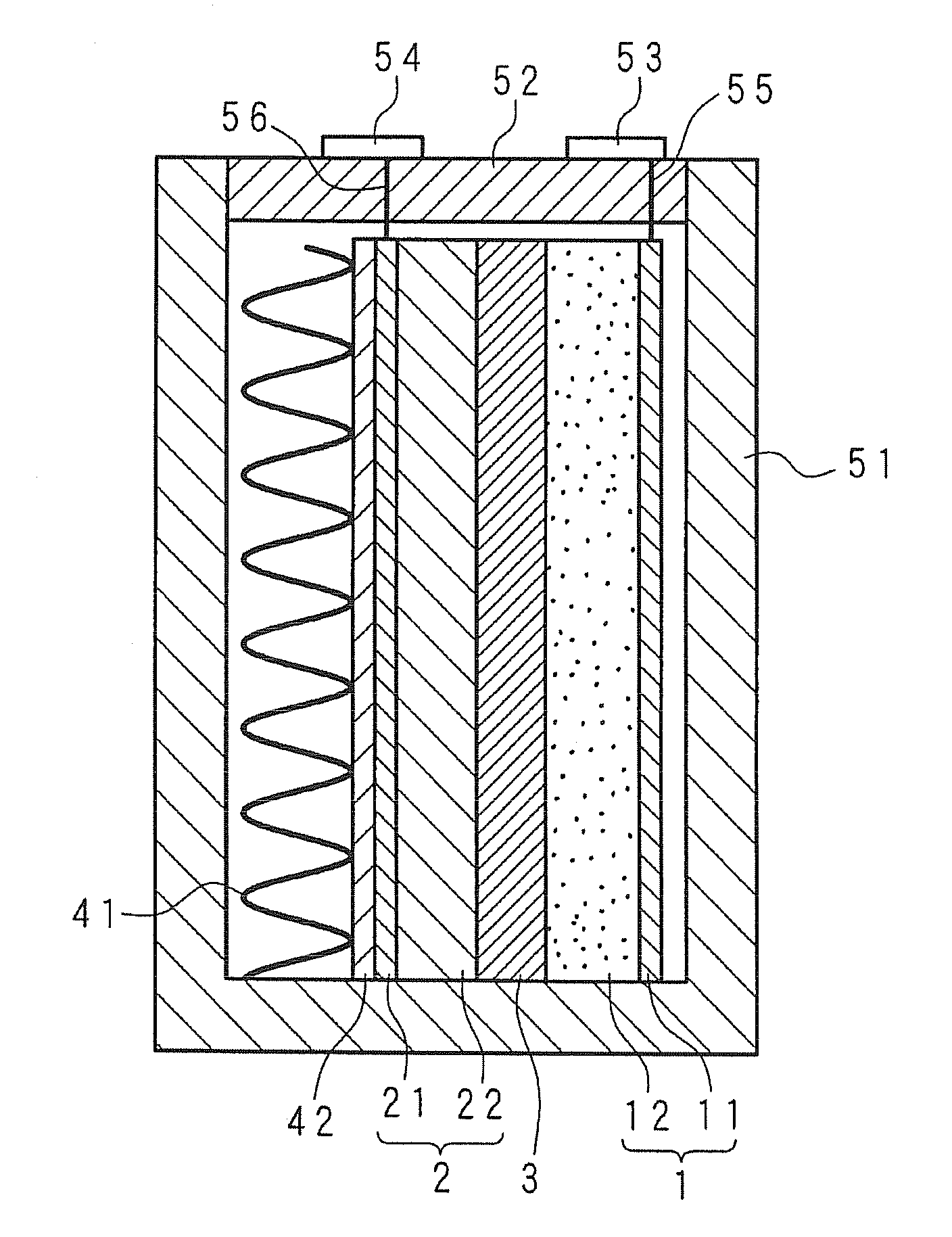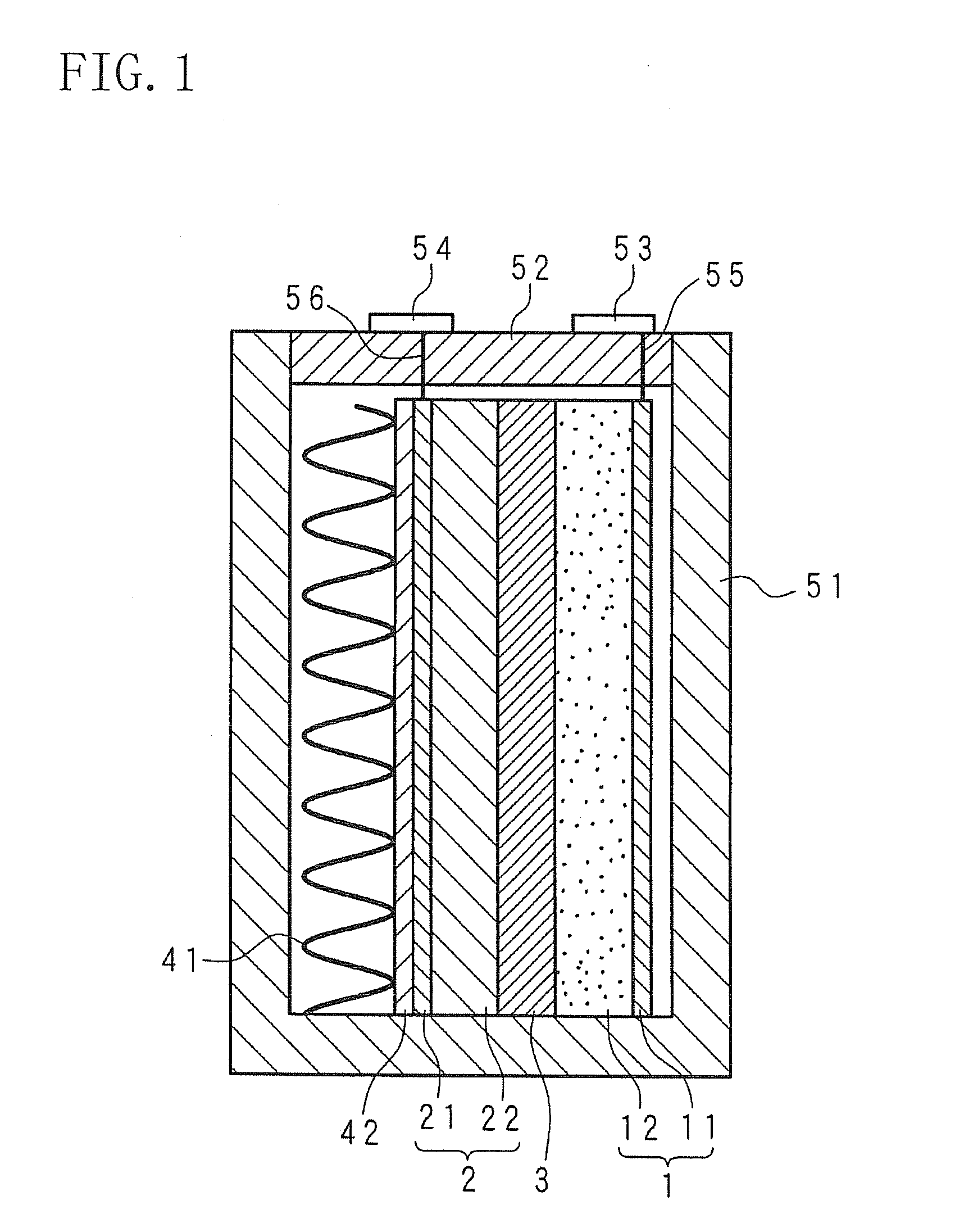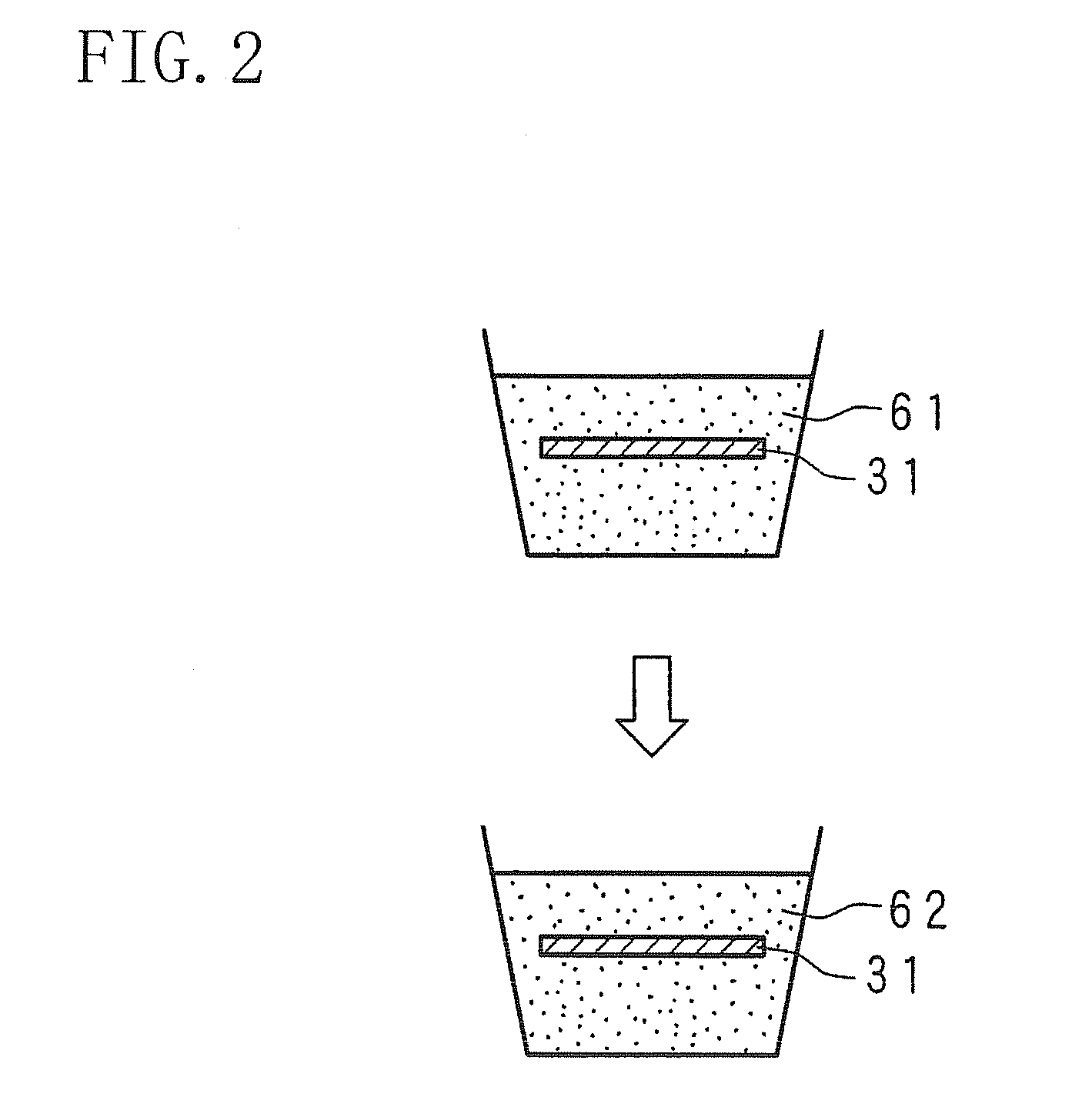Method for producing separator, method for producing molten salt battery, separator, and molten salt battery
a technology for molten salt batteries and separators, which is applied in the direction of cell components, final product manufacturing, sustainable manufacturing/processing, etc., can solve the problems of inability to easily adjust the electrical power generation amount in accordance, and achieve the effects of lowering the risk of short circuit, reducing internal resistance, and improving power
- Summary
- Abstract
- Description
- Claims
- Application Information
AI Technical Summary
Benefits of technology
Problems solved by technology
Method used
Image
Examples
embodiment 1
[0047]FIG. 1 is a schematic sectional view illustrating a structural example of a molten salt battery according to Embodiment 1 of the present invention. In FIG. 1, the illustrated schematic sectional view is one obtained by cutting the molten salt battery vertically. The molten salt battery has the following structure: inside a battery case 51 in the form of a rectangular parallelepiped box having an opened upper surface, a positive electrode 1 in the form of a rectangular plate, a separator 3 in a sheet form, and a negative electrode 2 in the form of a rectangular plate are arranged in parallel, and a lid section 52 is capped to the battery case 51. The battery case 51 and the lid section 52 are made of Al (aluminum). The positive electrode 1 and the negative electrode 2 are each made into a flat rectangular plate form, and the separator 3 is made into a sheet form. The separator 3 is interposed between the positive electrode 1 and the negative electrode 2. The positive electrode ...
embodiment 2
[0074]FIG. 9 is a schematic sectional view of a structural example of a molten salt battery according to Embodiment 2 of the present invention. In FIG. 9, the illustrated schematic sectional view is one obtained by cutting the molten salt battery vertically. In the same manner as in Embodiment 1, a separator 3 is a porous resin sheet, such as a PTFE sheet 31 to which hydrophilicity is given, and is made into a bag form. Specifically, resin sheets to which hydrophilicity is given are put onto each other, and circumferential edges of the resin sheets are joined to each other except the edges of respective single sides of the sheets, thereby producing the bag-form separator 3. For example, two PTFE sheets 31 each having hydrophilicity given by UV radiation are put onto each other, and then their circumferential edges are heated to be melted and bonded to each other, thereby producing the separator 3. A positive electrode 1 is wrapped in the bag-form separator 3 to be present in the bag...
embodiment 3
[0077]FIG. 10 is a schematic sectional view of a structural example of a molten salt battery according to Embodiment 3 of the present invention. In FIG. 10, the illustrated schematic sectional view is one obtained by cutting the molten salt battery vertically. The molten salt battery has positive electrodes 1 and negative electrodes 2. The positive electrodes 1 are each formed by painting a positive electrode material 12 containing a positive electrode active material onto both surfaces of a rectangular plate-form current collector 11 of the positive electrode. The negative electrodes 2 are each formed by depositing a negative electrode material 22 containing a negative electrode active material onto both surfaces of a rectangular plate-form current collector 21 of the negative electrode by plating. The plural positive electrodes 1 and the plural negative electrodes 2 are each formed into the form of a flat rectangular plate, and are alternately arranged in a battery case 51, in the...
PUM
| Property | Measurement | Unit |
|---|---|---|
| Pressure | aaaaa | aaaaa |
| Percent by atom | aaaaa | aaaaa |
| Percent by atom | aaaaa | aaaaa |
Abstract
Description
Claims
Application Information
 Login to View More
Login to View More - R&D
- Intellectual Property
- Life Sciences
- Materials
- Tech Scout
- Unparalleled Data Quality
- Higher Quality Content
- 60% Fewer Hallucinations
Browse by: Latest US Patents, China's latest patents, Technical Efficacy Thesaurus, Application Domain, Technology Topic, Popular Technical Reports.
© 2025 PatSnap. All rights reserved.Legal|Privacy policy|Modern Slavery Act Transparency Statement|Sitemap|About US| Contact US: help@patsnap.com



